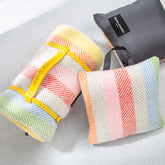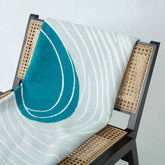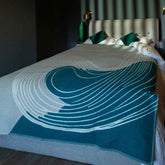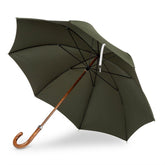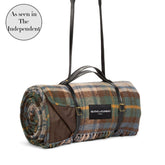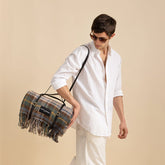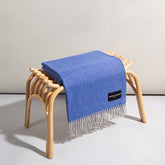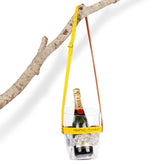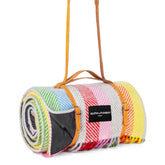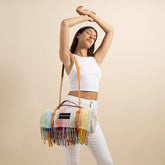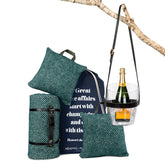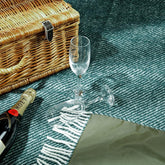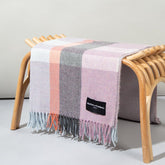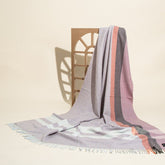Behind the Weave: Exploring the Heritage of British Wool Mills & Traditional Patterns
Ever wondered why British wool throws are so popular? It’s not just about staying warm—it’s about owning a piece of history. From the rugged beauty of Harris Tweed to the colourful tradition of tartan, British wool mills have been perfecting their craft for centuries.
These woven patterns aren’t just decorative; they carry stories of rural communities, skilled weavers, and a commitment to quality that’s hard to find in mass-produced textiles.
In this article, we’ll explore how British wool weaving began, the traditions behind the most iconic patterns, and why choosing a heritage throw is an investment in both style and sustainability.
Key Takeaways
-
British wool weaving has roots dating back to medieval times and flourished during the Industrial Revolution.
-
Patterns like tartan, herringbone, and windowpane each have deep cultural and design significance.
-
Authentic British wool throws are valued for their warmth, durability, and timeless appeal.
-
Buying from UK mills supports local craftsmanship and promotes sustainable, slow-fashion principles.
-
The tradition continues today in mills that blend historic techniques with modern quality standards.
The History of British Wool Mills
Wool weaving is one of Britain’s oldest trades, with records showing English wool being exported as early as the 12th century. By the Middle Ages, wool had become the backbone of the British economy—so much so that the Lord Chancellor’s seat in the House of Lords was famously called the “Woolsack.”
The real boom came during the Industrial Revolution. Towns like Huddersfield, Bradford, Hawick, and Selkirk became international centres for textile production, with mills powered by water and later steam. British woollen goods were shipped worldwide, renowned for their quality and craftsmanship.

Although many mills closed in the late 20th century due to cheaper overseas manufacturing, the past two decades have seen a resurgence in interest. Today, heritage mills remain highly respected, producing throws, blankets, and fabrics that uphold centuries-old weaving traditions.
The Craftsmanship Behind British Wool
Creating a British wool throw is far from a quick process—it’s a meticulous journey from sheep to finished fabric.
-
Sourcing wool – Many mills work with British breeds such as Bluefaced Leicester, Shetland, and Herdwick, each offering unique fibre qualities.
-
Shearing & scouring – Skilled shearers remove the fleece, which is then cleaned to remove natural oils and impurities.
-
Carding & spinning – The fibres are aligned and twisted into strong, consistent yarn.
-
Weaving – Looms (often the same ones used for decades) interlace warp and weft threads to create the chosen pattern.
-
Finishing – Throws are washed, brushed, or pressed for softness and durability.
Each stage is carried out by craftspeople whose expertise has often been passed down through generations, ensuring that every throw is not only functional but a work of art.
Iconic Traditional Patterns
British wool throws are instantly recognisable by their timeless patterns, each carrying its own story:
-
Tartan – Originating in Scotland, tartan patterns were once used to identify clans. Each colour and stripe arrangement has symbolic meaning, and today they’re celebrated worldwide for their heritage and style.
-
Herringbone – A distinctive V-shaped weave that’s both subtle and sophisticated. Its durability makes it ideal for everyday use while adding a textured look to any room.
-
Windowpane – A minimalist check design resembling the panes of a window, perfect for modern interiors while retaining a classic feel.
-
Houndstooth and Checks – Playful yet traditional, these patterns add personality to throws without overwhelming a room’s décor.
These designs aren’t just fashionable—they connect you to centuries of British textile artistry.

Why Heritage Matters Today
In an age of fast fashion and mass-produced homeware, heritage weaving represents something rare: slow, careful craftsmanship. A genuine British wool throw isn’t made to last a season—it’s designed to last for decades.
-
Sustainability – Wool is a renewable, biodegradable fibre. Buying less but buying better helps reduce environmental impact.
-
Cultural value – These patterns are part of Britain’s design history, passed down through generations.
-
Quality you can feel – From the tightness of the weave to the richness of the colours, heritage throws have a tactile and visual depth that synthetic alternatives can’t replicate.
Owning a heritage throw means supporting a tradition that values skill, sustainability, and timeless style.
Spotlight on British Mills Still Thriving
Despite challenges in the global textile market, several British mills continue to weave exceptional wool products:
-
Abraham Moon & Sons – Founded in 1837 in Yorkshire, this mill is known for producing premium fabrics for both fashion and homeware.
-
Johnstons of Elgin – Operating in Scotland since 1797, they specialise in high-end wool and cashmere products.
-
Bronte by Moon – Also based in Yorkshire, this brand blends traditional techniques with contemporary design trends.
-
Tweedmill Textiles – Based in Flint, Wales, they are known for colourful, high-quality throws and picnic blankets.
These mills don’t just make products—they keep British weaving traditions alive, ensuring the next generation can experience the warmth and charm of heritage wool.
How to Choose a Heritage Wool Throw
When you’re selecting a wool throw from a British mill, keep these points in mind:
-
Fibre quality – Look for pure new wool or blends with fine fibres like cashmere or alpaca for extra softness.
-
Weave tightness – A denser weave offers more warmth and greater durability.
-
Pattern style – Tartan suits cosy, traditional spaces; herringbone works beautifully in modern, minimalist homes; windowpane patterns blend easily with most décor styles.
-
Origin and label – “Made in Britain” or specific mill names are your assurance of authenticity and heritage.
-
Purpose – Choose lighter weaves for year-round use and heavier ones for winter warmth.
A carefully chosen heritage throw is more than a blanket—it’s a functional piece of art.

Care Tips for Heritage Wool Products
A British wool throw can last for decades with the right care:
-
Cleaning – Follow the care label; most heritage throws should be dry cleaned, though some can be hand washed in cool water with wool-safe detergent.
-
Storage – Store in a breathable cotton bag with cedar wood blocks to prevent moth damage. Avoid plastic bags, which can trap moisture.
-
Avoid direct heat – Keep throws away from radiators or strong sunlight to prevent fading and fibre damage.
-
Regular airing – Occasionally air your throw outside on a dry day to keep it fresh.
Treat your throw well, and it will only get softer and more beautiful over time.
FAQ – British Wool Mills & Traditional Patterns
Why are British wool throws so popular?
British wool throws are known for their warmth, durability, and timeless style. They’re made from high-quality natural fibres, often woven in heritage mills using techniques perfected over centuries. This combination of quality materials and skilled craftsmanship makes them stand out from mass-produced alternatives.
What makes Harris Tweed special?
Harris Tweed is a protected fabric woven by hand in the Outer Hebrides of Scotland. It must be made from pure virgin wool and dyed, spun, and finished on the islands. The result is a fabric that’s both rugged and beautiful, known for its distinctive patterns and longevity.
Why choose a British wool blanket over synthetic fabrics?
Wool is a natural, renewable fibre that regulates temperature, resists odours, and lasts for decades when cared for properly. Synthetic fabrics can be cheaper, but they often lack the warmth, breathability, and eco-friendliness of genuine wool.
What’s the story behind tartan patterns?
Tartan originated in Scotland, where each clan had its own distinct design and colours. These patterns were used to show family or regional identity and have since become a global symbol of Scottish heritage.
How long have wool mills been operating in Britain?
British wool mills date back to at least the 12th century, with production peaking during the Industrial Revolution. Some mills have been in continuous operation for over 200 years, preserving traditional weaving skills.

























